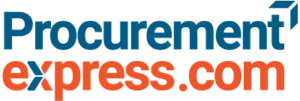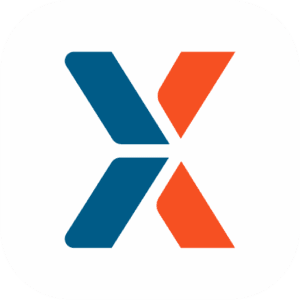Executive Summary
A growing healthcare management services organization with multiple clinical locations successfully implemented ProcurementExpress to centralize procurement operations, ensure regulatory compliance, and gain real-time visibility across their multi-site operations. The organization achieved streamlined approval workflows, enhanced budget transparency, and positioned themselves for seamless integration with their practice management systems.
Organization Profile
Industry: Healthcare Services (Multi-Specialty Clinics)
Structure: 19+ clinical locations plus corporate headquarters
Users: 25-30 total users (5 administrators, 20+ requisitioners)
Accounting System: QuickBooks Online (centralized across locations)
Implementation Team: Procurement leadership, operations management, and finance personnel
Initial Challenges
Multi-Location Complexity
The organization struggled with coordinating procurement across multiple geographically dispersed clinics, each with unique inventory needs while requiring centralized oversight and budget control.
Budget Transparency and Control
Without real-time visibility into spending patterns, the MSO faced challenges in tracking departmental spend, managing location-specific budgets, and ensuring financial accountability across sites.
Manual Processes
Paper-based purchase orders created inefficiencies, delayed approvals, and made it difficult to maintain accurate procurement records for audit purposes.
Regulatory Compliance Requirements
As a healthcare organization, they needed robust documentation, audit trails, and compliance tracking to meet industry standards and regulatory requirements.
Integration Needs
The organization required seamless connection with their QuickBooks system and anticipated future integration with multiple practice management systems across different locations.
Solution Implementation
Multi-Entity Configuration
ProcurementExpress configured the system with location-based departments, allowing users to request against specific clinic budgets while providing administrators with consolidated or individual location visibility through customizable dashboards.
Approval Hierarchy Design
Implemented a flexible approval workflow based on dollar thresholds and organizational hierarchy, ensuring appropriate oversight while maintaining operational efficiency across all locations.
Mobile Accessibility
Deployed mobile applications enabling clinic staff to submit purchase requests, scan invoices, and track order status from any location, critical for busy healthcare environments.
QuickBooks Integration
Established seamless two-way synchronization with QuickBooks Online, automatically creating purchase orders, updating delivery status, and generating bills upon invoice approval.
Key Features Utilized
Dashboard Customization
- Location-specific spend summaries
- Real-time approval status tracking
- Top supplier performance metrics
- Monthly/yearly budget comparisons
Procurement Automation
- OCR-powered invoice scanning
- Automated approval routing
- Purchase order generation
- Delivery confirmation tracking
Supplier Management
- Vendor portal access for communication
- Contract upload and management
- Performance rating system
- Product catalog with pricing history
Reporting Capabilities
- Detailed purchase order reports
- Location-based spending analysis
- Supplier performance metrics
- Budget variance reporting
Business Impact
Operational Efficiency
The mobile-first approach enabled staff to submit requests and track approvals in real-time, eliminating paper trails and reducing processing delays.
Real-Time Budget Visibility
Real-time dashboard views provided unprecedented transparency into spending patterns across all clinic locations, enabling proactive budget management.
Compliance Enhancement
Automated documentation and audit trails ensured regulatory compliance while reducing administrative burden on clinical staff.
Scalability Foundation
The system architecture positioned the organization for future growth, with capability to add new locations seamlessly and integrate with additional practice management systems.
Technical Implementation
Timeline
- Onboarding: 3-4 weeks including system setup and team training
- Integration: QuickBooks sync configured within first week
- User Adoption: Phased rollout across locations with dedicated support
Support Structure
- 24/7 chat support during business hours
- WhatsApp and phone support options
- Dedicated implementation specialist
- Screen-sharing support for issue resolution
Future Integration Planning
The organization planned for API integrations with practice management systems, with custom development estimated at $5,000-$10,000 depending on complexity and number of systems involved.
Pricing Structure
Monthly Subscription: ~$800/month for 25 users
Implementation Fee: $500 (reduced from standard $2,000)
Money-Back Guarantee: 90-day full refund period
API Development: $200/hour for custom integrations
Key Success Factors
Executive Buy-In
Strong leadership commitment from procurement and operations teams ensured successful adoption across all locations.
Phased Implementation
Rolling out by location allowed for refinement of processes and training approaches before full deployment.
Mobile-First Design
The identical mobile and desktop experience ensured consistent user adoption regardless of device preference.
Comprehensive Training
Dedicated implementation support and ongoing customer success management facilitated smooth transition from manual processes.
Future Roadmap
Inventory Integration
Plans for connecting with practice management systems to enable automated reorder points and inventory tracking across clinical locations.
Advanced Analytics
Implementation of predictive analytics for demand forecasting and seasonal purchasing optimization.
Expanded Compliance Features
Enhanced regulatory reporting specifically designed for healthcare industry requirements.
Industry Context
Healthcare organizations represent 6.9% of ProcurementExpress customers but generate 10.5% of total revenue, indicating higher value implementations due to complex compliance and integration requirements. The healthcare vertical shows strong growth with pharmaceutical companies, hospitals, and healthcare clinics as the primary segments.
Conclusion
This multi-location healthcare implementation demonstrates ProcurementExpress’s ability to handle complex organizational structures while maintaining simplicity for end users. The combination of mobile accessibility, robust approval workflows, and seamless accounting integration provided the foundation for scalable procurement operations across geographically dispersed healthcare facilities.
The organization’s emphasis on future API integrations with practice management systems positions them for comprehensive operational efficiency, connecting procurement data with patient care delivery systems for holistic business intelligence.
This case study reflects actual implementation requirements and outcomes from a healthcare organization demo conducted in August 2025. Results and implementation details may vary based on specific organizational requirements and system configurations.




